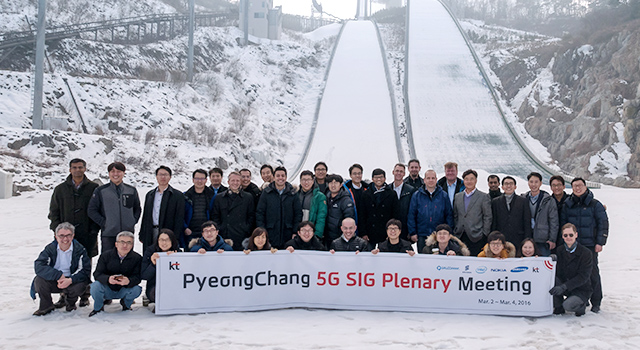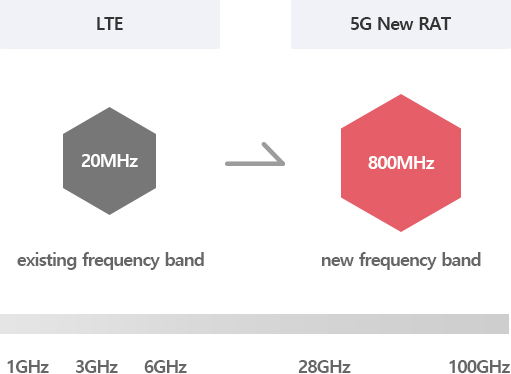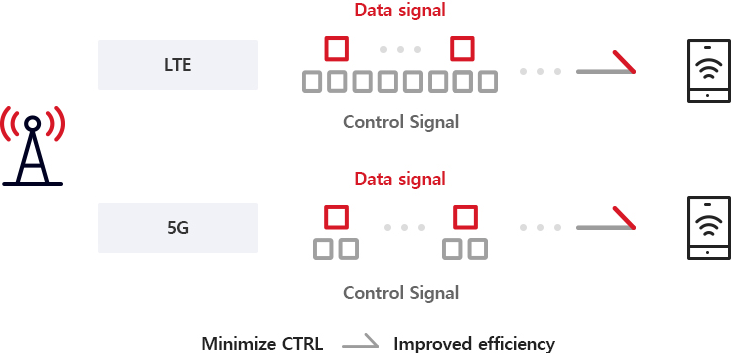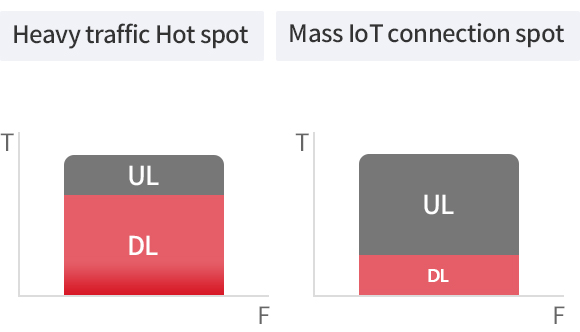5G-SIG

Constitution of KT 5G-SIG
(Special Interest Group)
KT has organized KT PyeongChang 5G Special Interest Group(KT 5G-SIG) to realize the world’s first 5G trial service at PyeongChang 2018 Olympic Winter Games.
With KT 5G-SIG members consisted of major global vendors, KT had developed the world’s first 5G common physical layer specification in Mar.‘16
and completed the full 5G specification including the higher layer(L2/L3) specification in Jun.’16
KT is pushing forward the development of the 5G trial network and is also planning to evaluate the performance of key 5G technologies based on KT 5G-SIG specification.
-
KT 5G-SIG Specification Download
-
- 5G.201
- (KT 5th Generation Radio Access;
Physical layer)
-
- 5G.211
- (KT 5th Generation Radio Access;
Physical channels and modulation)
-
- 5G.212
- (KT 5th Generation Radio Access;
Multiplexing and channel coding)
-
- 5G.213
- (KT 5th Generation Radio Access,
Physical layer procedures)
-
- 5G.214
- (KT 5th Generation Radio Access,
Physical layer measurements)
-
- 5G.321
- (KT 5th Generation Radio Access,
Medium Access Control protocol)
-
- 5G.322
- (KT 5th Generation Radio Access,
Radio Link Control protocol)
-
- 5G.323
- (KT 5th Generation Radio Access,
Packet Data Convergence Protocol )
-
- 5G.331
- (KT 5th Generation Radio Access,
Radio Resource Control)
-
- 5G.300
- (KT 5th Generation Radio Access,
Overall Description)
Disclaimer & Copyright Notice
This is the webpage of the KT PyeongChang 5G Special Interest Group (“KT 5G-SIG”) operated by KT corp. It provides access to 5G technical specifications developed by the KT 5G-SIG.
All information provided herein is subject to change without notice. The members of the KT 5G-SIG disclaim and make no guaranty or warranty, express or implied, as to the accuracy or completeness of any information contained or referenced herein.
THE KT 5G-SIG AND ITS MEMBERS DISCLAIM ANY IMPLIED WARRANTY OF MERCHANTABILITY, NON-INFRINGEMENT, OR FITNESS FOR ANY PARTICULAR PURPOSE, AND ALL INFORMATION IS PROVIDED ON AN “AS-IS” BASIS.
No licenses under any intellectual property of any kind are provided by any person (whether a member of the KT 5G-SIG or not) that may be necessary to access or utilize any of the information contained herein, including, but not limited to, any source materials referenced herein, and any patents required to implement or develop any technology described herein. It shall be the responsibility of anyone attempting to use the information contained or referenced herein to obtain any such licenses, if necessary.
The KT 5G-SIG and its members disclaim liability for any damages or losses of any nature whatsoever whether direct, indirect, special or consequential resulting from the use of or reliance on any information contained or referenced herein.
© 2016 KT corp. All rights reserved -
-
Ultra-wideband mmWave
The Main Technology of KT 5G-SIG
Ultra-wideband mmWave

Ultra-wideband mmWave is the technology which uses above 6GHz frequency to utilize contiguous ultra-wideband spectrum.
Due to the radio characteristics of the mmWave, the radio coverage could be restricted compared to the 4G spectrum.
However shorter wavelength of the mmWave allows more antenna element to be integrated, which can be leveraged for beamforming. -
Beamforming
The Main Technology of KT 5G-SIG
Beamforming

Beamforming is the technology that steers signal transmission to a specific direction using multiple number of antenna elements.
It can maximize communication capacity at the cell edge and can also be used as a major technology of 5G for minimizing interference between user equipment. -
Lean Design
The Main Technology of KT 5G-SIG
Lean Design

Lean Design reduces the overhead of the control signal compared to LTE by optimizing the control signal transmission.
This improves the radio resource utilization as well as the energy efficiency. -
Self-contained Structure
The Main Technology of KT 5G-SIG
Self-Contained Structure

Self-Contained is a frame structure which provides downlink and uplink resource efficiently for minimizing latency.
It contains downlink control, uplink control and data(either in downlink or uplink direction), all in a single subframe(a slot), thus the name “Self-Contained”.
With this frame structure, latency can be significantly reduced to enable real-time and mission-critical applications for 5G. -
Dynamic TDD
The Main Technology of KT 5G-SIG
Dynamic TDD

Dynamic TDD(Time Division Duplex) is the technology which adaptively allocates the radio resource in time for uplink and downlink transmission.
(In LTE, the uplink and downlink allocation is fixed) With Dynamic TDD, the network can flexibly allocate the radio resource based on the traffic demands. -
4G-5G Interworking
The Main Technology of KT 5G-SIG
4G-5G Interworking

4G-5G Interworking allows seamless handover between 4G and 5G network for reliable connectivity and enhanced coverage.
Control signal can be carried over 4G for reliability and data can be transmitted over 5G when for ultra-high speed data connection.